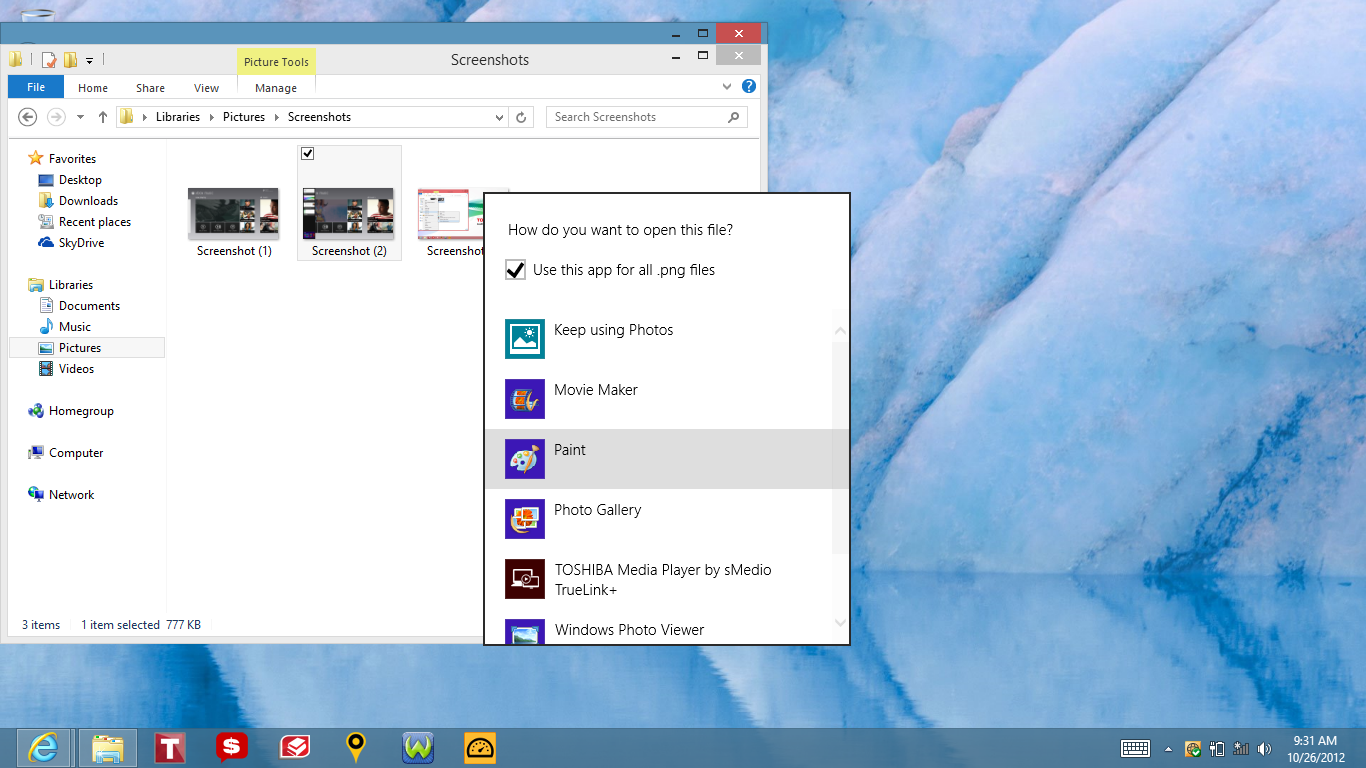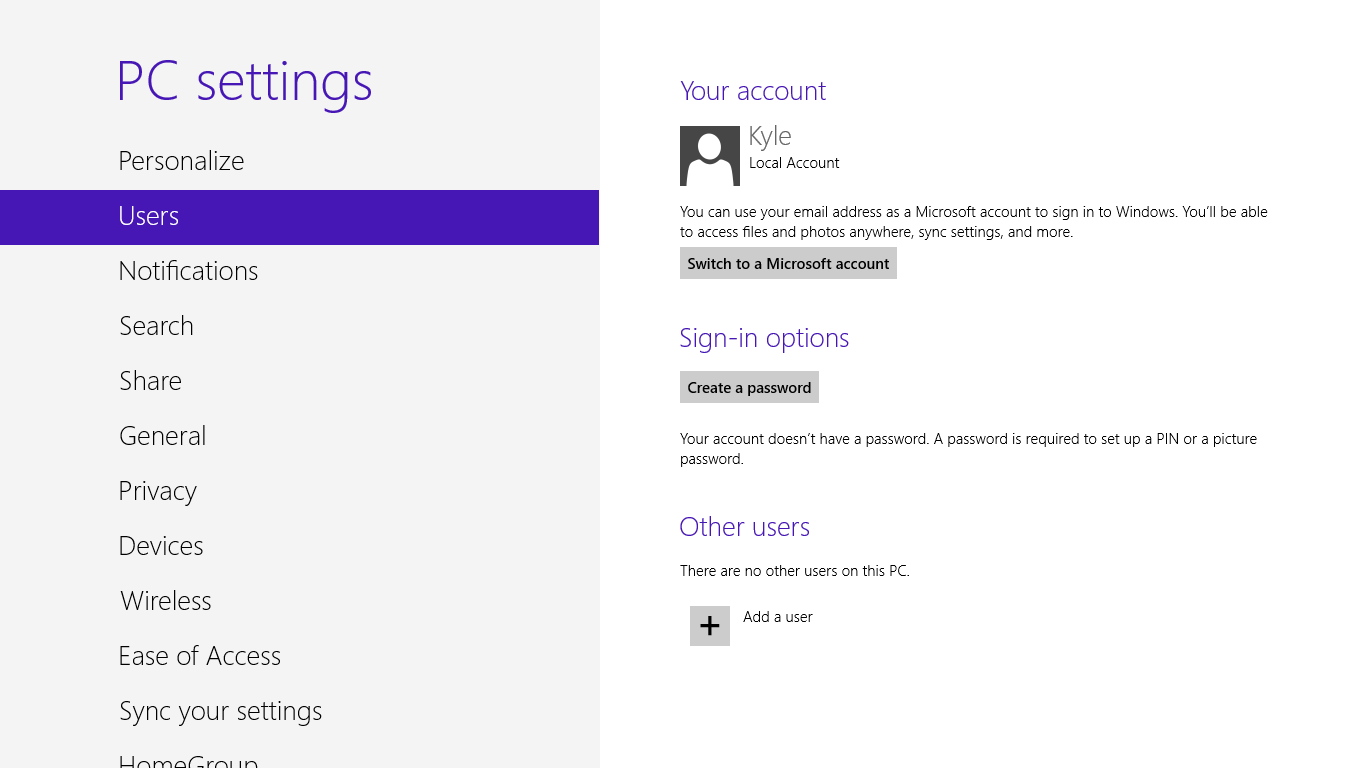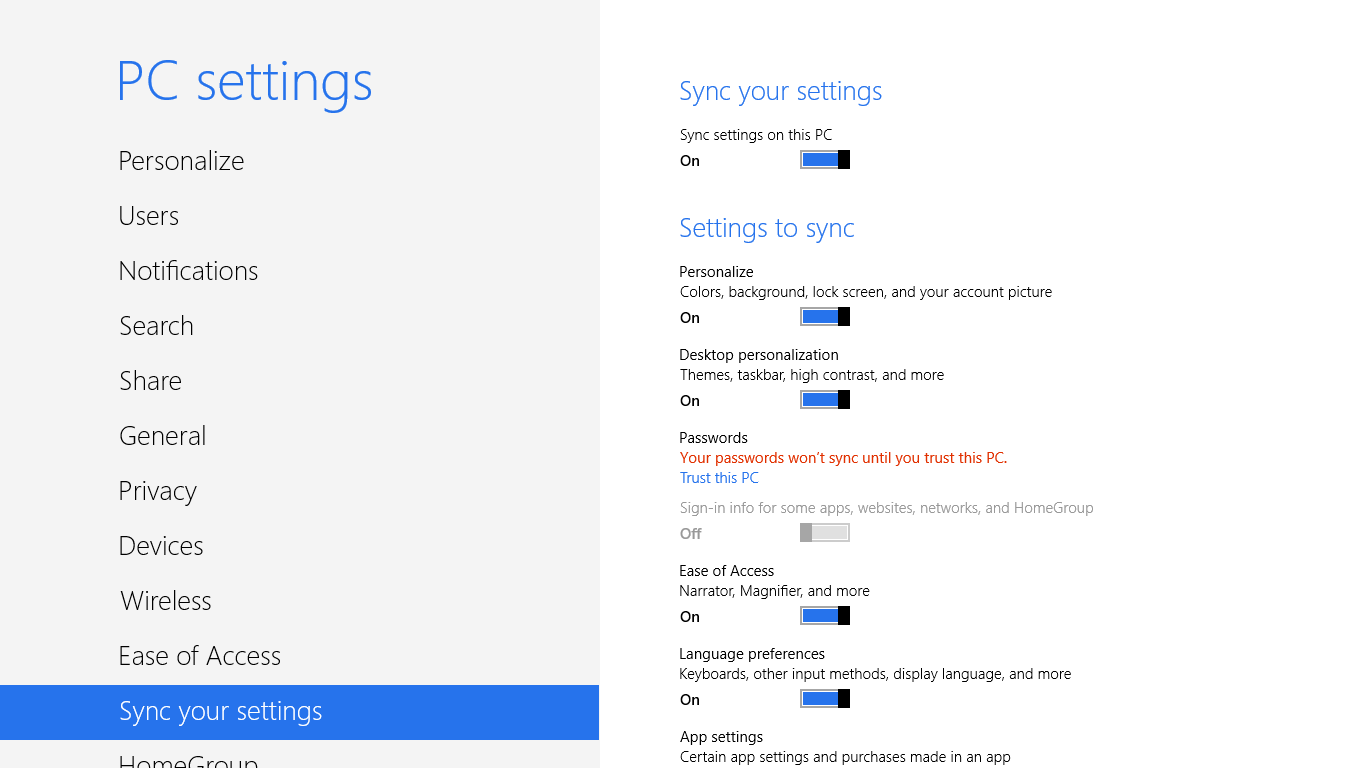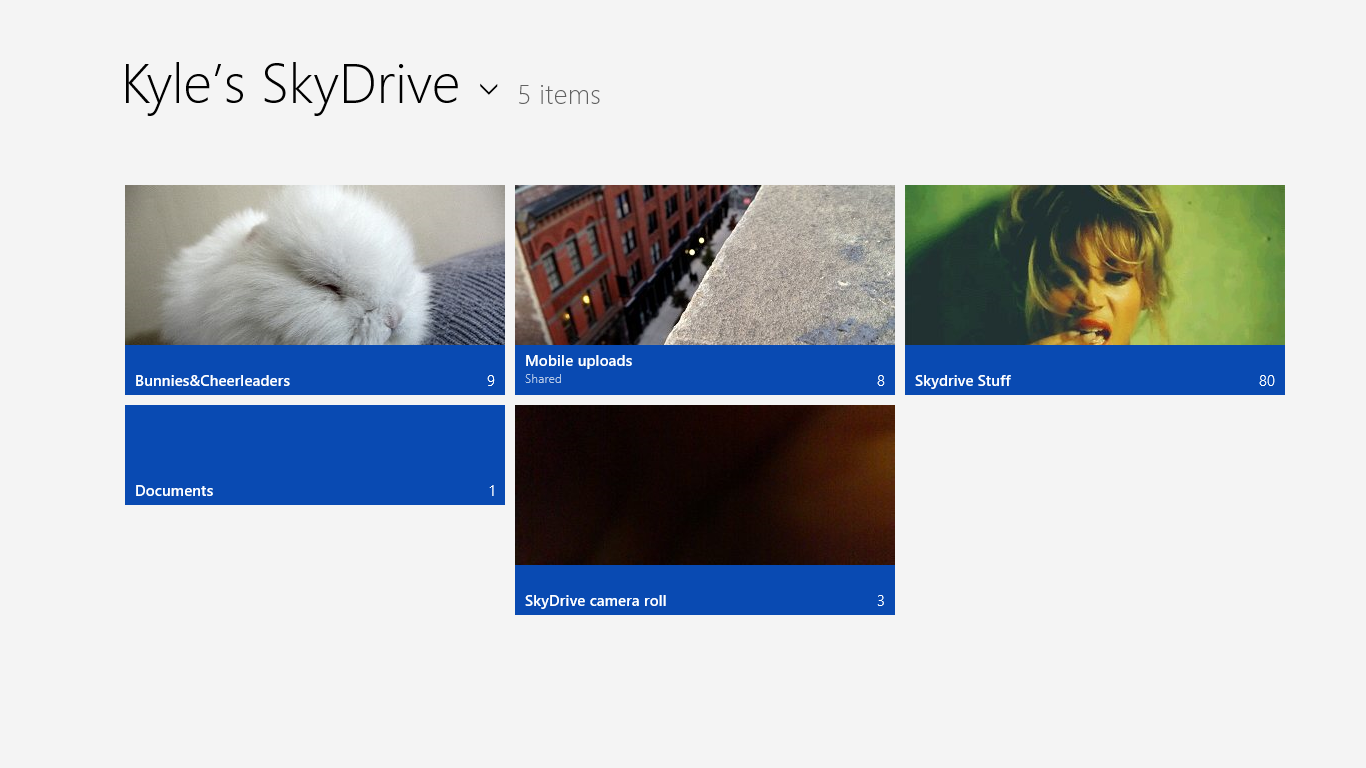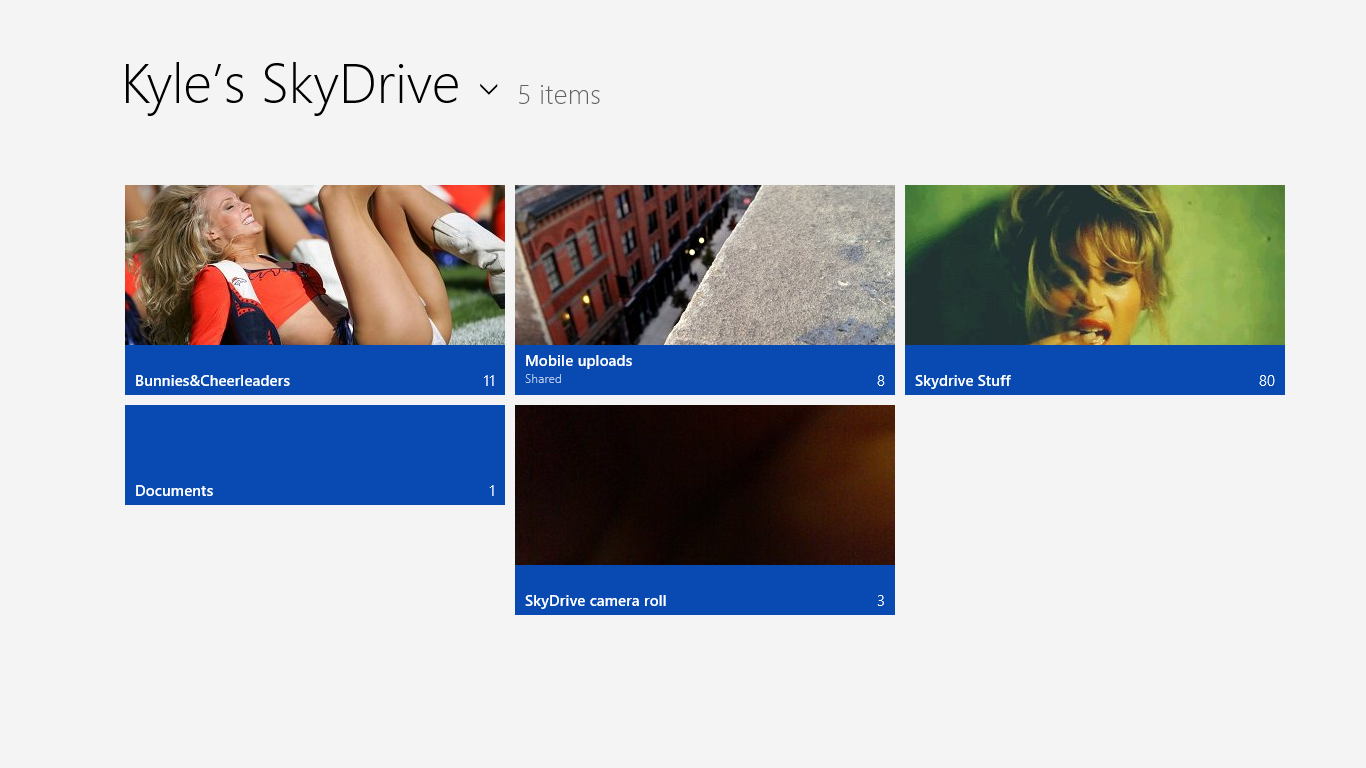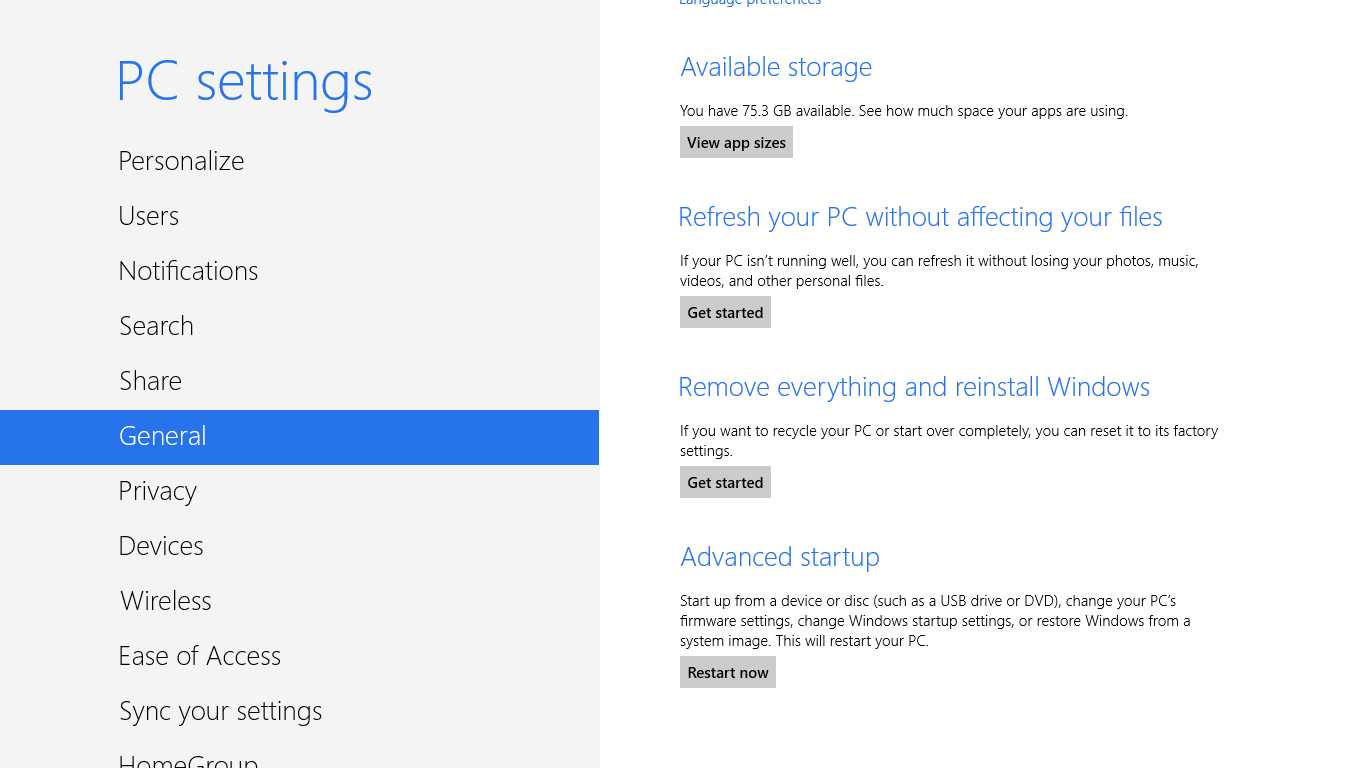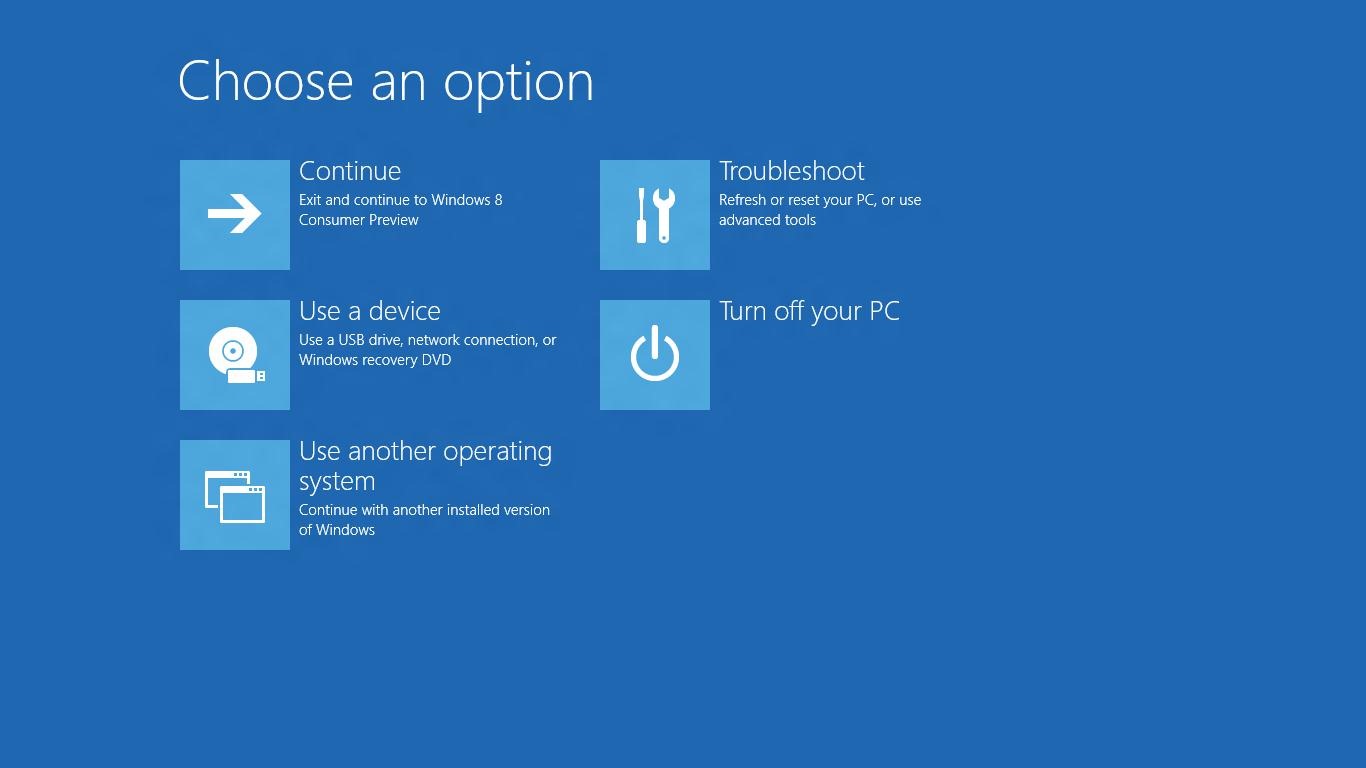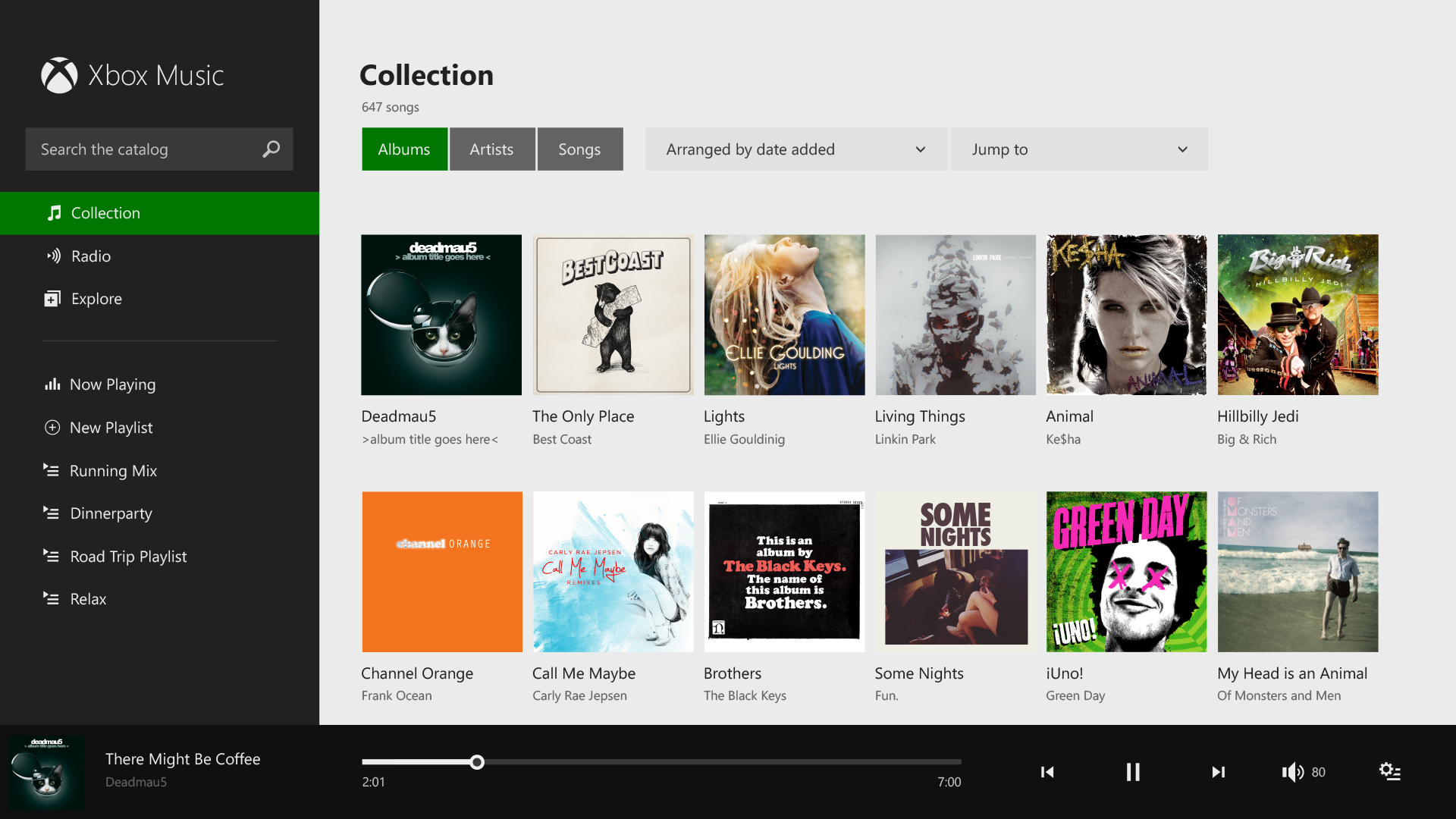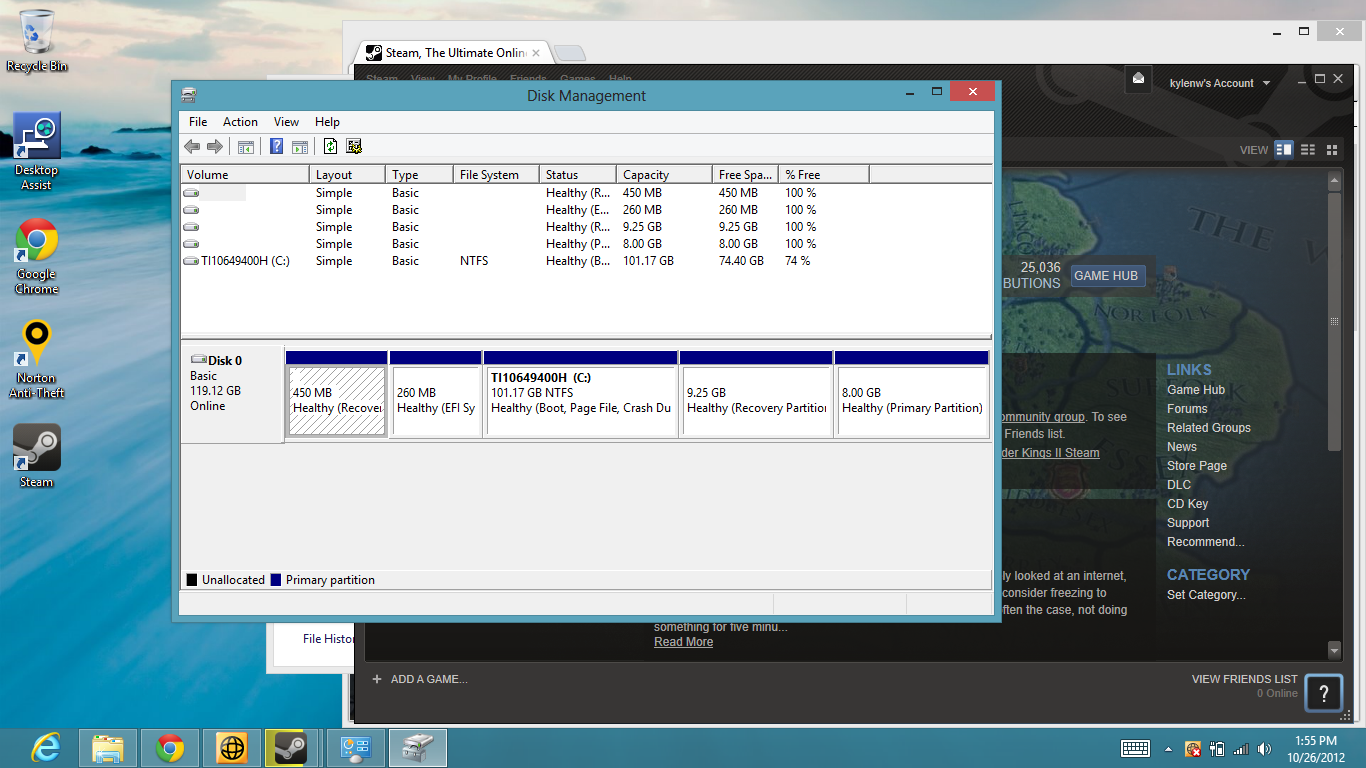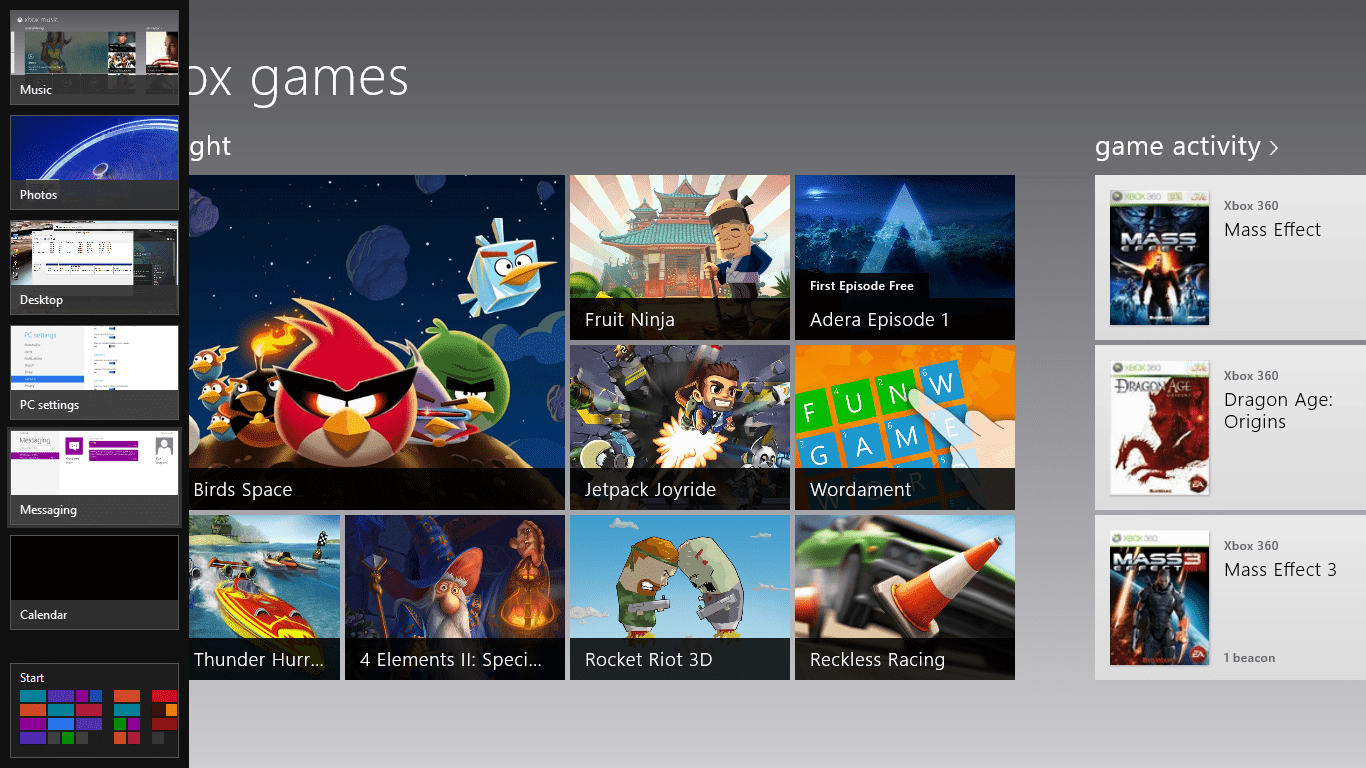
Know Which Version of an Application You Want to Install
With Windows 8, a lot of apps are going to have two versions for you to choose from, or, often, that you can run at the same time. It can be confusing, and leads to useful stories with insane headlines like “Understand The Differences Between The SkyDrive App And The SkyDrive Application.” That’s more punchline than headline, but the point is a good one: As you use more and more apps that have been updated for Windows 8, you’re going to have to decide whether you want the Modern version or the desktop version.
How You Should Actually Multitask with Live Apps
If you do choose to embrace Windows 8 in all its tiled goodness — and you really should — the first trouble you’re going to run into is fluidly switching between apps. Your programs will now open full screen, which means going back and forth is more complicated than just clicking around. And Alt+Tab doesn’t behave quite like you’re used to any more. So here’s how to get around:
Your New Most Used (But Kinda Clumsy) Gesture: You can zoom through Metro apps while multitasking easily enough just by swiping (or clicking in the top left corner, if you’re on a mouse), but there’s one problem: It can be a crap shoot which app you’re going to get, since there’s no visual reference point about what’s coming up next, and in what order. The gesture to get around this isn’t super obvious.
If you’re using a touchscreen, pull from the left side of the screen, like you’re going to yank an app over for that fast-change multitask, but then shove it back to the left. This brings up the Windows 8 app selector, where only Windows 8 apps are shown, with the desktop environment being a single app. As far as we can tell, this doesn’t work on trackpads (at least the ones we’ve used). Once you used to it, though, it’s actually a more natural way to access multitasking than iOS, and a little easier than Android since you don’t have to reach for a button — it’s just always on the left side of your screen.
Alt Tab vs. Start Tab: This is another big difference. In Windows 7 and Windows Vista, Start+Tab cycled you through your apps using the Aero view, with previews of each windows rather than the regular Alt+Tab. Now, though, Start+Tab accesses the same Windows 8 multitasking menu, while Alt+Tab is unchanged.
The difference between the two is that Alt+Tab has an icon for each of your Windows 8 apps, but also each of your desktop apps. So if you’re just Alt+Tabbing around, you can get disoriented by zapping from full screen app to full screen app.
How To Use Gestures Without A Touchscreen Or A (Working) Trackpad
One of the best things about Windows 8 is that it adds an incredible amount of functionality to your arsenal with swipes and taps. You know, gestures. But if you don’t have a touchscreen or a compatible trackpad, here’s how you can still take advantage of all the new shortcuts. Microsoft calls them “hot corners,” but they’re basically just mouse-friendly maneuvers:
Start: Mouse to the bottom left corner, left click the tile.
Power User Navigation: If you right click the bottom left popup instead of left clicking it, you’ll get options for a host of commands, like opening Task Manager or Control Panel, or individual settings like Power Options or Device Manager.
Multitask Quick Swap: Mouse to the top left corner and left click it (You can also right click to close or snap left or right)
Multitask Bar: Mouse to the top left corner, then slide your cursor down the left side of the screen. (Right click closes or snaps left or right here as well)
Charms: Mouse to the top or bottom right corner.
Close Live App: Click the top-center of the app and drag it to the bottom of the screen.
Live App Menu: Right click anywhere in the Live app
Aero Peek: Aero Peek is still here! Mouse to the bottom right corner and leave the cursor there.
Other New Keyboard Shortcuts
Start+C: Open charms
Start+Q: Search charm
Start+H: Share charm
Start+K: Devices charm
Start+I: Settings charm
Start+Q: Search apps
Start+W: Search settings
Start+F: Search files (It’s easier to just type directly into the Start screen, but these take you directly to your desired search category.)
Start+,: Peek at desktop
Start+B: Back to desktop
Start+Enter: Open Windows Narrator
Start+X: Open system utility settings menu
For Live Apps
Start+.: Snap app left
Start+Shift+.: Snap app right
Start+Z: App options
Start+Tab: Cycle through app history
Start+F4: Close an app
You Might Actually Prefer A Mouse
The weird thing about Windows 8 in its Modern (formerly Metro) interface is that while it’s meant to be touched, and gestures are enabled on (most) trackpads, using a mouse with it is surprisingly great. So good, in fact, that using the scroll wheel to zoom around the horizontal areas and right clicking and using keyboard shortcuts is easier than dealing with trackpad drivers a lot of times. Go figure.
Pin Apps To The Search Bar
You will probably be using the search bar a LOT to navigate your way around Windows 8. So while the defaults of Apps, Settings, and Files are good things to search in, the rest of your apps are in alphabetical order. That’s not convenient for calling up frequently used apps — like, say, Music or Bing — in a hurry. Thankfully, there’s a better way.
Just open the search bar through the Charms bar, or from the Start screen, and right click an app and select Pin. It will now remain just under the default three search categories, and you can drag your pinned apps around to rearrange their order.
Pin Desktop Apps To The Start Screen
If you like the new Start screen, but you just want to use it as a hub and do all the rest of your work in Desktop mode, you can use it as, basically, a fancy app launcher, widget hub (with Live Tiles), and favourites hub by yanking out all of the tiles that would open a separate Live app. You do this just by right-clicking a desktop app and selecting Pin to Start.
This is a good tip to use in conjunction with picking new default non-Modern apps. You can also keep just one or two Live apps there, and use them as your Snap apps. That will also have the added bonus of making the fast-swap gesture more usable since it would always be the same thing.
[clear]
Get Your Google Apps And Search Working
A lot of people rely heavily on Google services for their PC life. Google’s made it easy to maintain those services — and replace their default Microsoft equivalents in Windows 8 — by making a landing page called getyourgoogleback.com. From there you can easily download the Google Search app and Chrome, and stick them on your Start screen. You can also pin the Google Search app to the search bar, ahead of Bing.
Take The Time To Sync Up With A Microsoft Account
You can run a regular local account on Windows 8, but it’s definitely worth your time to set up a Microsoft account. All that requires is a Hotmail, Live, Outlook, or other Microsoft email address.
To sign in systemwide, go to the Charms bar, and select Settings > Change PC Settings (this will send you to another window) > Users From there you can select Switch to a Microsoft ccount. From there, just enter your account email, or you’ll be given the option of creating one. A new subhead will now appear in PC Settings called Sync your settings. You can pick out which kinds of settings you want to sync.
It’s worth your while, especially since it’ll save you the trouble of having to sign in each and every time you try to access Xbox Music, the Windows Store, etc.
Turn Off the Lock Screen
Windows 8 turns on the lock screen by default, which is probably for the best. But if you’d rather not deal with it, you can disable it, and launch right into the screen you left off at.
Type “netplwiz” into the start screen, and launch the app that comes up. Then select your user account, and uncheck Users must enter a user name and password to use this computer. You’ll be prompted to enter your password twice. Now just restart and you’re password-free. You can re-enable the lock just by doing this in reverse.
BEWARE: Live Tiles Make ALL Of Your Photos And Video Thumbnails REALLY VISIBLE
Speaking of security! This is a very funny side effect but also a very real one for, basically, all of you. Any embarrassing photos or videos you have on your computer, once displayed in the new Modern interface, will be used as thumbnails for your folders. So. If you’re in SkyDrive, for instance, and you have a folder with a bunch of photos of your family at the beach, but in another folder carefully hidden and innocuously named there are photos of scantily clad furries, guess what: you’re running a roulette game that the furries will be the top level folder’s thumbnail.
Basically: Burying your porn is no longer good enough. All the more reason to just keep that stuff in your browser, where it belongs.
Nuke All Of The Bloatware On Your Machine At Once
Windows 8 makes making a clean install simpler than ever. Just go into PC Settings > General. Scroll to the bottom, and you’ll see two options: Refresh your PC without affecting your files and Remove everything and reinstall Windows.
The first option will retain your music, photos, and other personal files, while the latter option will just give you a toasty fresh install of stock Windows 8. That’s it. No discs, no hassle.
It’s probably a good idea to run this as soon as you buy any new computer.
Change The Boot Drive If Windows Boots Too Fast
Traditionally, when you’re changing which drive or partition your computer boots from, you do it at startup. But Windows 8 boots really fast, so if you need to switch the drive and don’t want to futz with timing your keystrokes, just go to PC Settings > General > Advanced startup options. From there, you can restart into a screen that will let you switch operating systems, troubleshoot, continue to Windows, or restart.
Take Advantage Of The New Task Manager
Task Manager (Control + Alt + Delete) is one of the more boring parts of Windows, but it got a bit of a facelift in Windows 8, and there are some new features that can make your life easier.
The biggest advantage is the Startup feature, which doesn’t just tell you which programs are set to load when you start your computer; it also tells you how much they’re going to affect startup time. That ranges from None, to Low, Medium, and High. Some are Not Measured, but for the most part, this should let you more accurately pick which programs to launch at startup.
[clear]
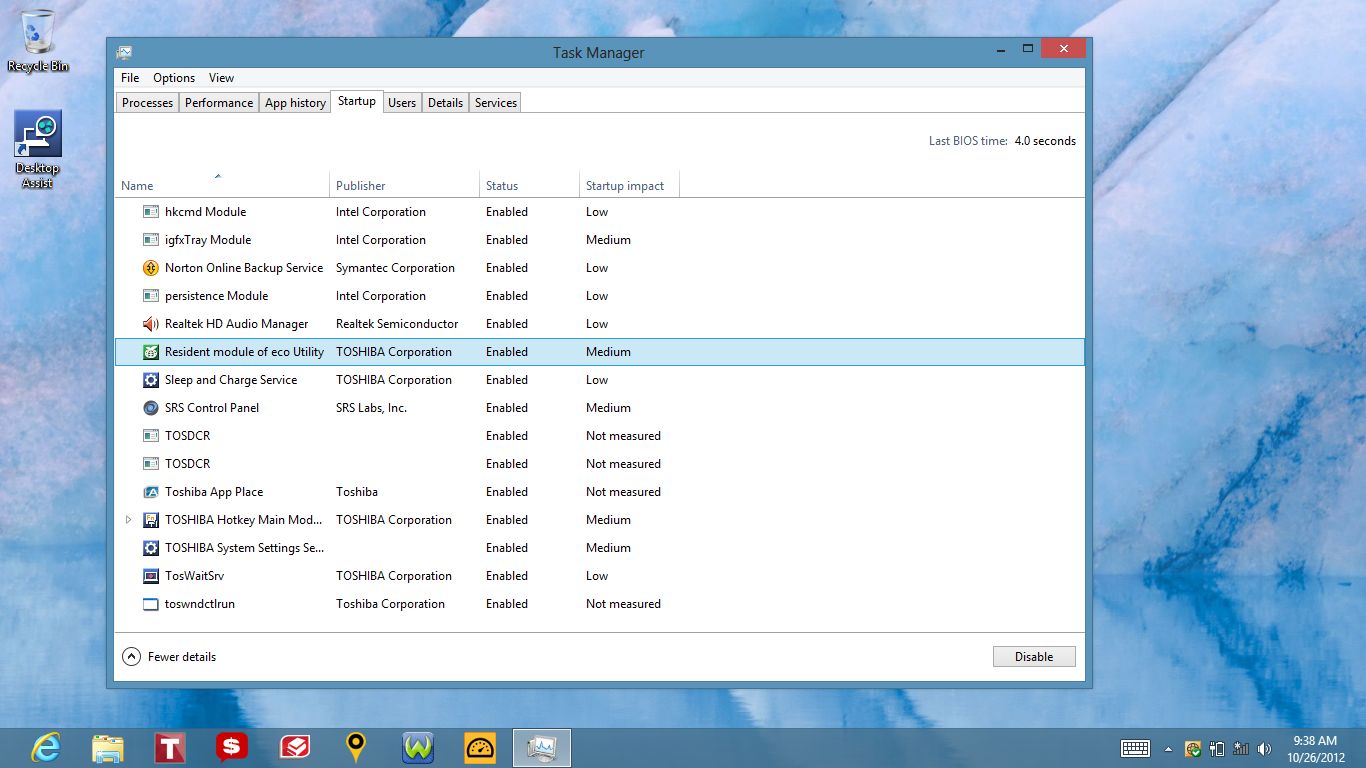
Easy Screenshots! Finally!
There’s finally an easier way to take screenshots on Windows. Here’s the keyboard shortcut, which will dump the screenshots into a Screenshots folder in your Pictures folder.
Start+PrntScrn:: Take screenshot and save to Pictures
Try Out Xbox Music — But Know What You’re Getting
Xbox Music is Microsoft’s new streaming music service. It’s activated by default if you’ve connected your Microsoft account to your Windows 8 install, meaning that you can just boot up Windows 8 for the first time and play free music in the Music app. Think of it as a built-in Spotify. Pretty cool. But before you sign up for the premium version, beware that cross-platform support isn’t available yet. It’s coming, but unless you’re using a Windows Phone, Windows laptop, Windows tablet, and an Xbox, you’ll maybe want to stick with Spotify or Rdio for now.
Know The Difference Between RT And Windows 8
Microsoft hasn’t done a great job of explaining that Windows RT is not the same as Windows 8, even though they look very much alike. If you’re buying one of the new computers made specifically for Windows 8, take a moment to figure out which version of Windows you want. Here’s our full breakdown of what Windows RT can’t do.
But in short, Windows RT is more of a mobile OS than a true desktop OS, and you should know that going in. You’ll be able to use the new convertibles to do some of the stuff you’d do on a regular laptop, but it’s absolutely a compromised experience. Which is fine! It’s better than not having the option on your tablet. But anyone telling you it turns your tablet into a full-on laptop is full of it.
Run Windows 8 In Its Own Partition First
Maybe you’d rather just dip your toes in the Windows 8 waters, and not go all the way in. Totally fine. You can install a partition and run Windows 7 and Windows 8 side-by-side and even select which is the default.
If you’re starting from Windows 7, just go to Windows’ Disk Management and set up a 20GB partition for Windows 8. From there, you can simply install Windows 8 on that partition. You can use the aforementioned boot drive selector in Windows 8 to pick which OS you’d like to make the default.
Wipe Windows 8 Out And Install Windows 7 Instead
OK. Last thing. If you REALLY don’t want Windows 8, you can get out of it. Simply install Windows 7 on a partition, as detailed above, boot it up, and erase your Windows 8 partition. But know that you’re not getting making a full escape; you’re just buying yourself some time before the future fully takes hold.

